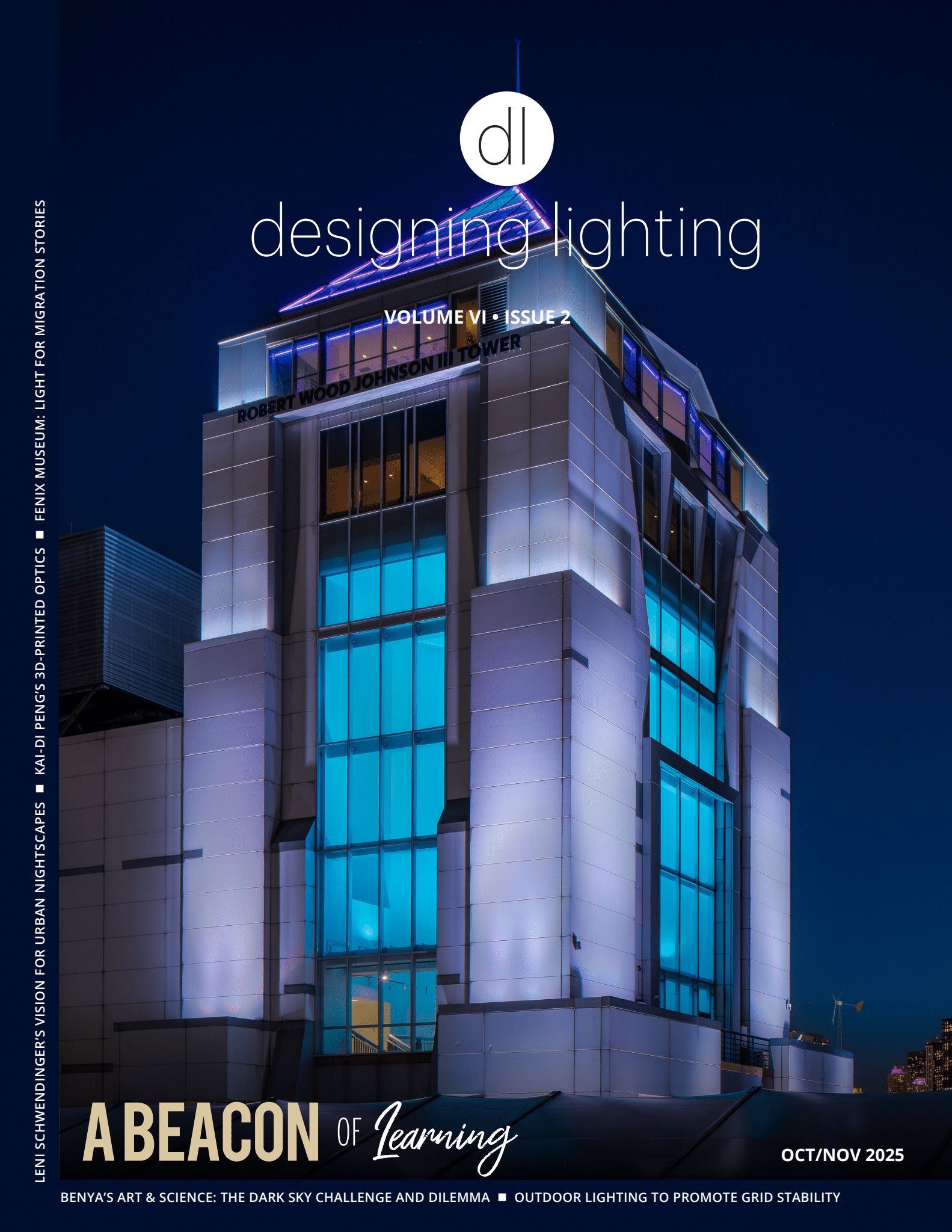If you went back in time about 10 or 15 years ago, 70% to 75% of our practice was interior lighting. Today at least 50% of our work is exterior, and we are doing more outdoor work even compared to before COVID. So the trend had already started. Now that we’re all indoors most of the time, people are really craving outdoors. We are revisiting some of our projects and seeking ways to expand our outdoor usage and engagement.
Today, even in projects that are under construction, we see building owners going back to the architect and asking for more plaza space; specifically, more outdoor gathering space than originally planned. They are going back to the drawing board, even in urban areas. Architects are adding balconies and creating cafe spill-out zones on street fronts in order to increase exterior space.
We are hearing from many of our clients that they desire more outdoor space, even seeking ways to make the outdoors more present inside for those working indoors.
Occasionally, we will do corporate campus work. There has been some groundbreaking work done by companies like Apple and Google who have large campuses with ample opportunity to expand outside. It’s no longer just corporate campuses out in the country. We’re starting to see it in urban environments where designers are tasked to create an outdoor space. Corporate campuses have been stressing the use of outdoor space as an interaction community. People utilize these hybrid indoor-outdoor spaces for meetings and gatherings. Of course, lighting must respond to that too, because in many cases these spaces may have a different life after dark.
We’re working on a project here in Saint Louis where the designers have captured outdoor space by adding a couple of terraces and giving back some interior space to create an overhanging area with café seating. For years this particular building didn’t have an inviting presence for those who worked downtown. Pedestrians saw this as just another office building, a monolith. But now the first two floors of this 24-story building are being transformed into an engaging interior space with beautiful wood ceilings that are illuminated and visible from the street. These improvements help make the building an active participant in the street frontage and set it apart from the shuttered structures we often see in urban areas.
Many climates like that of California and some of the southern US states can extend their summer, spring and autumn well into the winter by just doing a modest amount of warming. We are seeing designs that build in fireplaces and fire pits; they become part of the structure and are in some cases discretely built into the architecture. There is a restaurant up the street from us who has built in a series of pergolas. People are outside eating breakfast at 7:00 a.m. on weekends and it’s 40 degrees.
The pandemic has significantly impacted our work, leading us to design more outdoor projects. I think people thrive in outdoor environments and they feel more comfortable. Everything we hear is that exercising out of doors is so much healthier for us, rather than going to the corporate gym or running around the indoor track. Think about the importance of urban communities. We just did a master plan for the city of San Antonio and one of the things that they got really excited about was learning how they could make use of secondary space like alleys and vacant lots. For example, pop-up retail and food vendors would be deployed on the weekends or perhaps during dedicated periods in the calendar for food court week or specific city district celebrations. We can drive that foot traffic with lighting. Normally, people walk down an urban street and avoid dark, uninviting alleyways at all costs. Now, cities are turning alleys into art hallways, galleries or food halls and more! People linger there. Young new artists get to display work.
We surveyed over 1200 people on the masterplan and 71% of the respondents agreed that the lighting around where they work plays a meaningful role in whether they stay after work for cultural activities. 71% of the people said lighting influences that decision! We are changing how people view downtown at night.
People have to be outside because of this pandemic, and they really enjoy it. Do I think this trend will continue long after the pandemic? Absolutely.
This article originally appeared in the February issue of designing lighting





